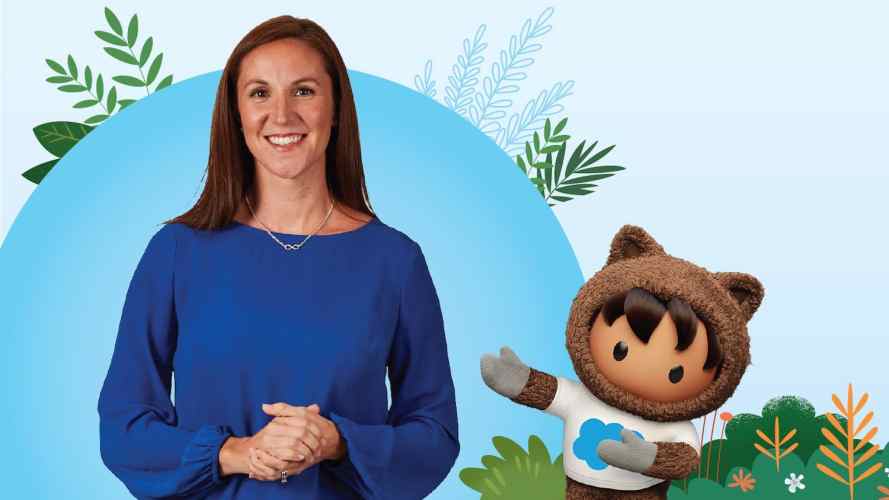This post is part of our Moment Makers series, which takes a deep dive into how marketers use technology to build data-driven customer experiences that feel natural, relevant, and right on time. Valpak is a Salesforce customer.
Can coupons help neighborhoods grow? They may not be the first thing people think of, but the answer is yes. Coupons connect businesses and customers in a simple way. The customer gets digestible information and a discount, and the business gets a chance to solve a customer’s problem (even something simple like “what’s for dinner?”). It’s also an opportunity to build a loyal, supportive customer base, resulting in a stronger community.
Valpak helps local businesses such as restaurants and nail salons reach customers directly by delivering coupons through the mail or a digital channel. We have 140 offices around the U.S., and it’s our goal to help small-to-medium businesses reach as many targeted households as possible. Each month, we send an envelope full of coupons to more than 38 million homes around the country.
Identifying the right businesses for our brand and building strong relationships with them is tougher than it looks. When I joined Valpak three years ago, we relied on outdated marketing and sales strategies. Each department worked on its own, with little overlap or collaboration. This made it hard to get a unified view of a customer or prospect, which resulted in lost business opportunities.
After some soul-searching, we turned to an account-based marketing (ABM) strategy. This helped our marketing, sales, and service efforts to truly connect with the accounts that mattered most.
Our ABM strategy is a work in progress, but we’ve enjoyed some nice wins over the past year. To help you in your own strategy, here are a few lessons we’ve learned along the way.
1. Get your teams aligned from the start
A strong account-based marketing strategy is built on communication. That means getting your marketing, sales, and service teams in sync with one another.
Good communication starts on the ground floor, so we train our internal teams together. We educate them about the entire lead management process, so they have a good understanding of the customer life cycle. And our teams learn how to talk to customers in the same way, which leads to more unified campaigns and messaging.
Open communication must also be incorporated into your everyday workflow. We use Pardot to send weekly emails to our sales reps updating them on campaign progress and results. These provide key insights that help our reps target the most promising accounts.
We also build lists within the Salesforce CRM, so reps can access details about our email campaigns and customer response in real time. As a result, we don’t waste time searching for information to identify and target the best accounts.
2. Narrow down and follow up
Finding decision-makers and keeping them engaged are the biggest challenges and the biggest opportunities we face when targeting accounts.
The first step in our ABM strategy was to identify Valpak Media Partners — accounts with high revenue potential. With our lead management and communication processes in place, marketing worked with sales reps to pinpoint top accounts and decide what content to send them through our marketing automation platform.
Marketing then delivered content, and the sales team used insights from the campaign to provide buyers with solutions tailored to their needs.
Despite efficient lead management, sometimes customers and prospects “ghost” us, usually because they’re too busy. But our ABM strategy makes it easy to continue nurturing these accounts and run successful reactivation campaigns. We use Pardot to determine the best time to reengage and loop in sales to follow up with the buyers.
3. Harness the power of the “handwritten” note
I’ll give you an example. The COVID-19 pandemic hit local businesses hard, and we recognized an opportunity to put personalized messaging into action. We created a direct mail campaign with postcards written by our CEO delivered to hundreds of our customers. The messages acknowledged the challenges these businesses were facing and included the CEO’s signature and phone number.
Our CEO received hundreds of phone calls thanking him for reaching out. The customers shared their appreciation for Valpak, and we gathered valuable testimonials and information about our competitors.
We also launched an automated email campaign with a message from our CEO to our sales reps. The message was auto-forwarded to their prospects, resulting in a 4x increased open rate, a 100x increase in forward rates, and unexpected updates on sales prospects for our CEO.
Having a single source of truth for all of our customer data in our CRM was essential to this success. It helped us adapt our messaging and deliver a personalized touchpoint for each account. We saw a 450% return on investment (ROI) on these campaigns, and our teams built stronger relationships with customers to draw better insights for the future — a real win-win.
Be patient and keep building
I’ll be the first to admit that creating and carrying out an ABM strategy can be hard. But the payoff comes fast if you invest in a strong foundation.
As a next step, take the time to evaluate your current process and platforms. Are you communicating with your sales reps and the entire company about your ABM strategy? How well do you understand your customers? Which tech tools are working well and which need to be upgraded?
Use these questions as a jumping-off point for your own ABM strategy. When you approach account-based marketing with thought and preparation, the results will follow – and the communities around you will prosper too.
- Download The B2B Marketer’s Guide to Account-Based Marketing for how-to resources on developing your own strategy.
- Listen to our Marketing Cloudcast mini-series “How to Speak ABM” to learn how account-based marketing helps companies target the right accounts for their business.
Marketing Cloud offers solutions for digital marketing, email marketing, social media marketing, customer journey mapping, marketing analytics, marketing automation, and B2B marketing to help you personalize customer communications across every digital touchpoint — from anywhere.




























